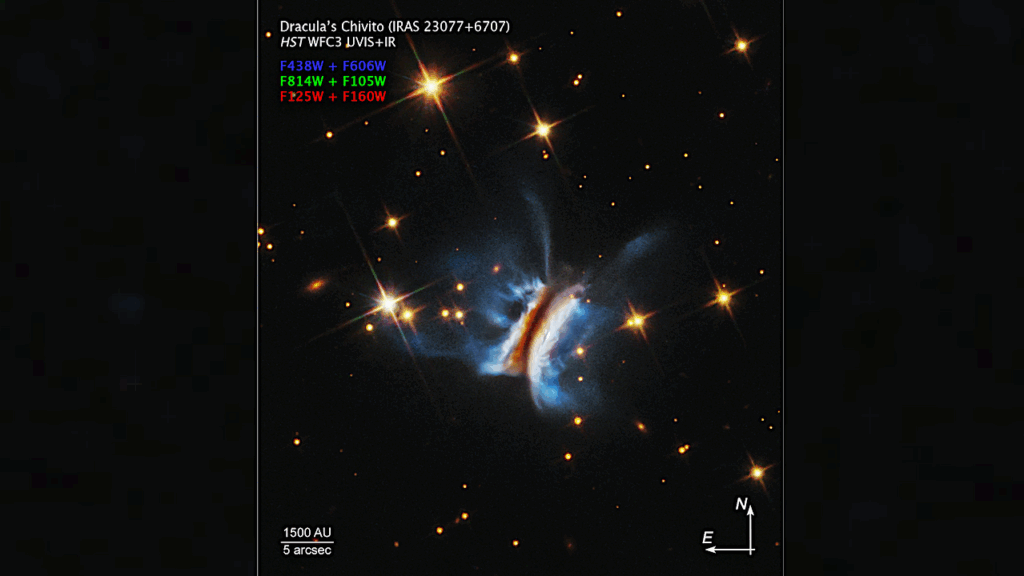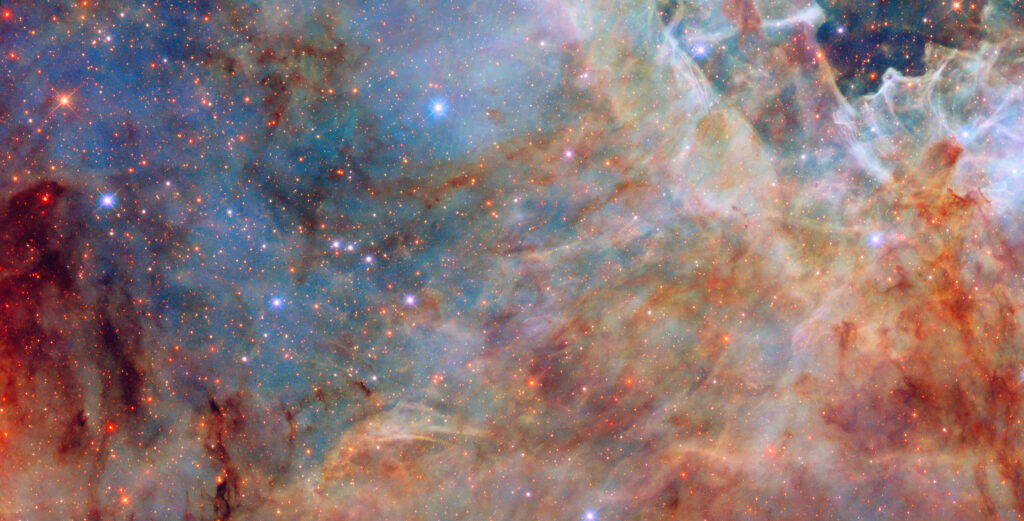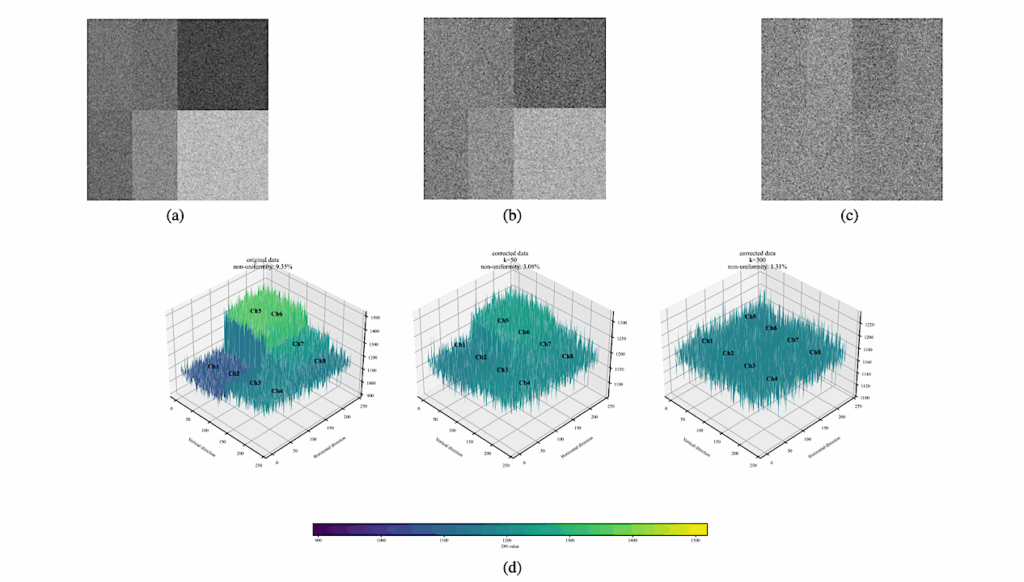Chasing Rainbows And Ocean Glints: Inner Working Angle Constraints For The Habitable Worlds Observatory

NASA is engaged in planning for a Habitable Worlds Observatory (HabWorlds), a coronagraphic space mission to detect rocky planets in habitable zones and establish their habitability.
Surface liquid water is central to the definition of planetary habitability. Photometric and polarimetric phase curves of starlight reflected by an exoplanet can reveal ocean glint, rainbows and other phenomena caused by scattering by clouds or atmospheric gas. Direct imaging missions are optimised for planets near quadrature, but HabWorlds’ coronagraph may obscure the phase angles where such optical features are strongest.
The range of accessible phase angles for a given exoplanet will depend on the planet’s orbital inclination and/or the coronagraph’s inner working angle (IWA). We use a recently-created catalog relevant to HabWorlds of 164 stars to estimate the number of exo-Earths that could be searched for ocean glint, rainbows, and polarization effects due to Rayleigh scattering. We find that the polarimetric Rayleigh scattering peak is accessible in most of the exo-Earth planetary systems.
The rainbow due to water clouds at phase angles of ∼20−60∘ would be accessible with HabWorlds for a planet with an Earth equivalent instellation in ∼46 systems, while the ocean glint signature at phase angles of ∼130−170∘ would be accessible in ∼16 systems, assuming an IWA=62 mas (3λ/D). Improving the IWA=41 mas (2λ/D) increases accessibility to rainbows and glints by factors of approximately 2 and 3, respectively. By observing these scattering features, HabWorlds could detect a surface ocean and water cycle, key indicators of habitability.
Sophia R. Vaughan (1), Timothy D. Gebhard (2 and 3), Kimberly Bott (4 and 5 and 6), Sarah L. Casewell (7), Nicolas B. Cowan (8), David S. Doelman (9 and 10), Matthew Kenworthy (9), Johan Mazoyer (11), Maxwell A. Millar-Blanchaer (12), Victor J. H. Trees (13 and 14), Daphne M. Stam (15), Olivier Absil (16), Lisa Altinier (17), Pierre Baudoz (11), Ruslan Belikov (18), Alexis Bidot (19), Jayne L. Birkby (1), Markus J. Bonse (3), Bernhard Brandl (9), Alexis Carlotti (19), Elodie Choquet (17), Dirk van Dam (9), Niyati Desai (20), Kevin Fogarty (18), J. Fowler (21), Kyle van Gorkom (22), Yann Gutierrez (11 and 23 and 24), Olivier Guyon (22 and 25 and 26 and 27), Sebastiaan Y. Haffert (22), Olivier Herscovici-Schiller (23), Adrien Hours (19), Roser Juanola-Parramon (28 and 29), Evangelia Kleisioti (9 and 30), Lorenzo König (16), Maaike van Kooten (31), Mariya Krasteva (32), Iva Laginja (11), Rico Landman (9), Lucie Leboulleux (19), David Mouillet (19), Mamadou N’Diaye (33), Emiel H. Por (34), Laurent Pueyo (34), Frans Snik (9) ((1) Astrophysics, Department of Physics, University of Oxford, (2) Max Planck Institute for Intelligent Systems, (3) ETH Zurich, Institute for Particle Physics and Astrophysics, (4) Department of Earth and Planetary Sciences, University of California, Riverside, (5) NASA Nexus for Exoplanet System Science, Virtual Planetary Laboratory Team, (6) NASA Nexus for Exoplanet System Science, Terrestrial Polarization Team, (7) Centre for Exoplanet Research, School of Physics and Astronomy, University of Leicester, (8) Department of Earth and Planetary Sciences and Department of Physics, McGill University, (9) Leiden Observatory, Leiden University, (10) SRON Netherlands Institute for Space Research, (11) LESIA, Observatoire de Paris, Université PSL, CNRS, Sorbonne Université, Université de Paris, (12) Department of Physics, University of California, Santa Barbara, (13) Department of Geoscience and Remote Sensing, Delft University of Technology, (14) Royal Netherlands Meteorological Institute (KNMI), (15) Delft University of Technology, (16) STAR Institute, Université de Liège, (17) Aix Marseille Université, CNRS, CNES, LAM, (18) NASA Ames Research Center, (19) Université Grenoble Alpes, CNRS, IPAG, (20) Department of Astronomy, California Institute of Technology, (21) Department of Astronomy and Astrophysics, University of California, Santa Cruz, (22) Steward Observatory, University of Arizona, (23) DTIS, ONERA, Université Paris Saclay, (24) DOTA, ONERA, (25) Subaru Telescope, NAOJ, (26) College of Optical Sciences, University of Arizona, (27) Astrobiology Center, Tokyo, (28) NASA Goddard Space Flight Center, (29) University of Maryland Baltimore County, (30) Faculty of Aerospace Engineering, TU Delft, (31) National Research Council Canada, Herzberg Astronomy and Astrophysics Research Center, (32) European Space Agency, ESTEC, (33) Université Côte d’Azur, Observatoire de la Côte d’Azur, CNRS, Laboratoire Lagrange, (34) Space Telescope Science Institute)
Comments: MNRAS accepted, 9 pages, 8 figures, 3 tables
Subjects: Earth and Planetary Astrophysics (astro-ph.EP)
Cite as: arXiv:2307.15137 [astro-ph.EP] (or arXiv:2307.15137v1 [astro-ph.EP] for this version)
Related DOI:
https://doi.org/10.1093/mnras/stad2127
Focus to learn more
Submission history
From: Sophia Vaughan
[v1] Thu, 27 Jul 2023 18:17:31 UTC (1,801 KB)
https://arxiv.org/abs/2307.15137
Astrobiology








